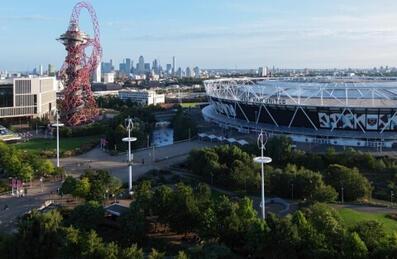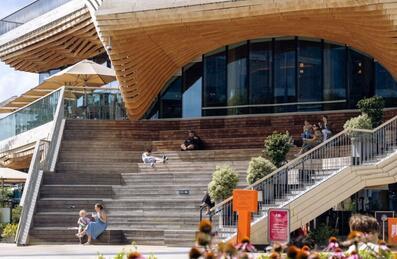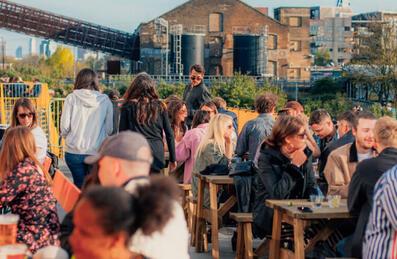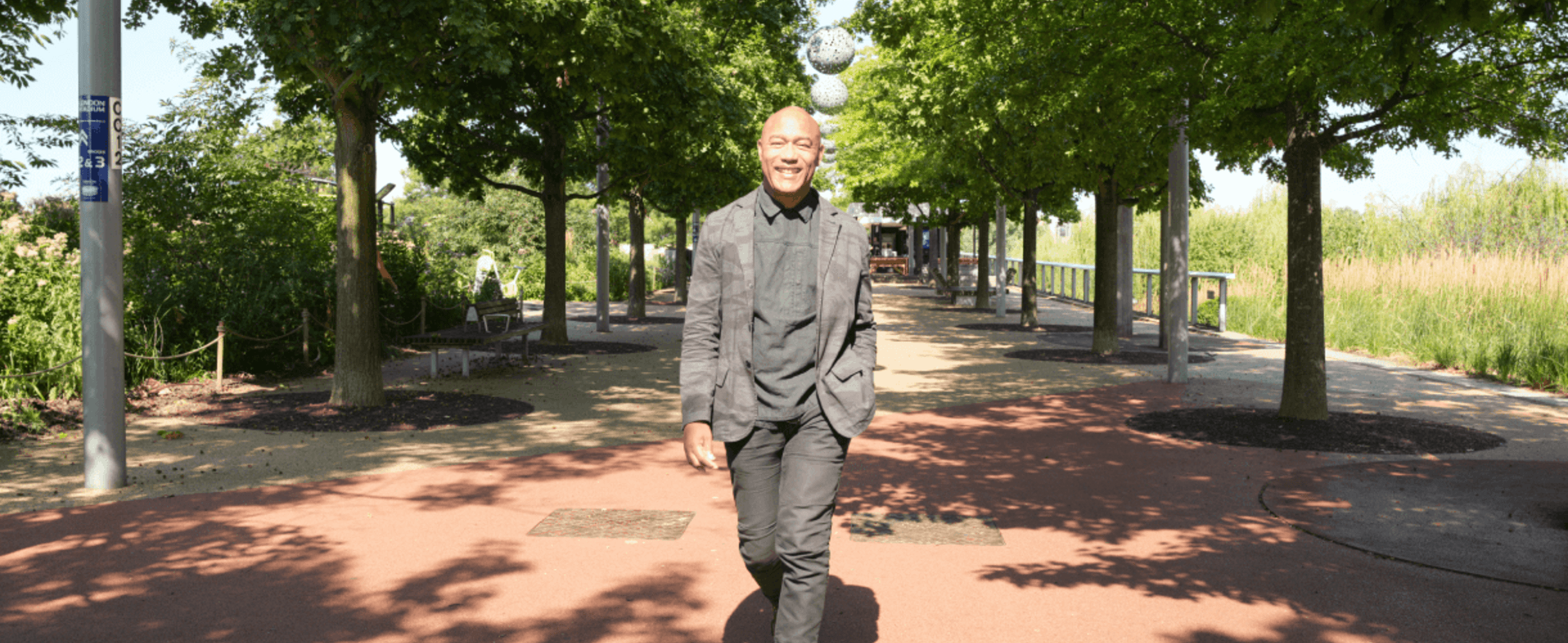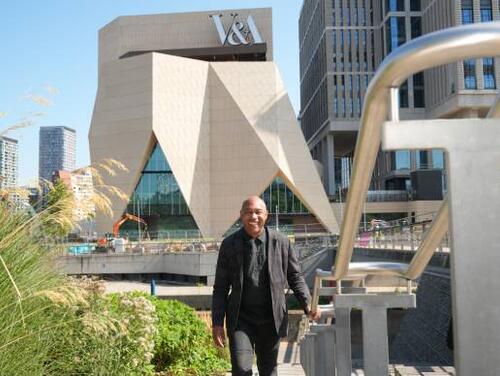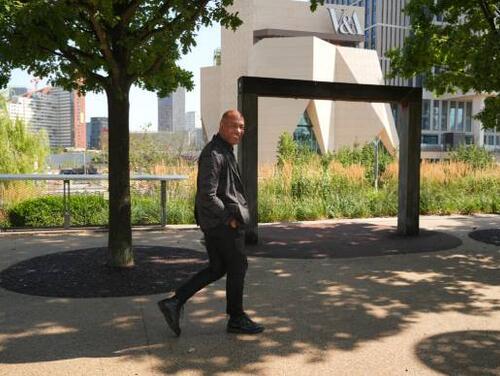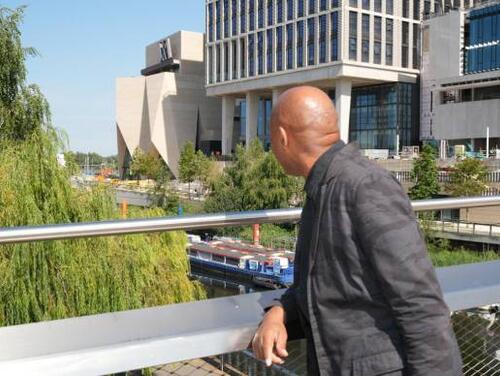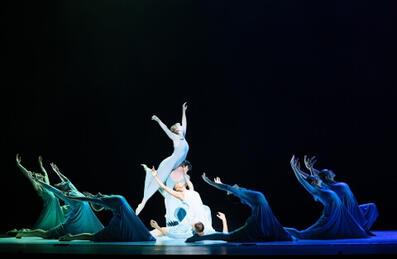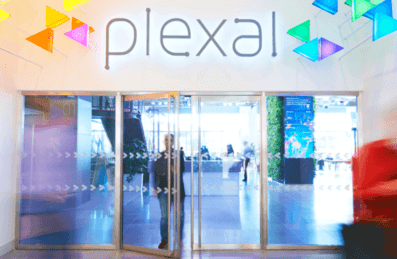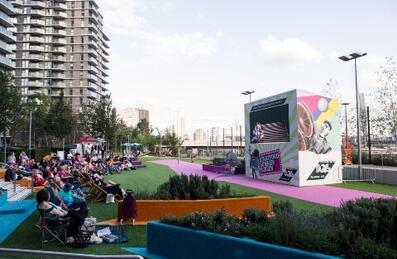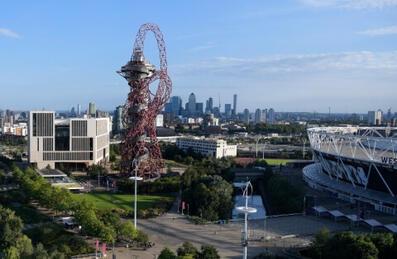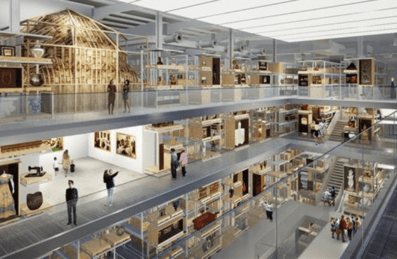
Popular Searches:
Keep up to date
Sign up today for exclusive offers and incredible experiences you won’t want to miss at Queen Elizabeth Olympic Park.
Sign up nowCase study: V&A East
V&A East is a brand-new museum, collection and research centre in Queen Elizabeth Olympic Park, London. In this exclusive interview, we talk to Gus Casely-Hayford, Director of V&A East, about what it's like to do business here in east London.
Q&A
Q: What sets the V&A East, apart from the other V&A museums?
Gus: I think we can't deny its location… and this is a fantastic place to be. This was always a place that seems to be dedicated to making, and that is an element of the V&A’s history that we really want to celebrate the V&A East.
And so, of course, we are part of the V&A family, but what we want to do here, which is nuanced, which is different, we want to focus on a younger, demographic 16 to 24 year olds who are pretty badly served, I think, by museums generally. But also we want to take advantage of this place being so immersed in, in making, and being surrounded by other institutions that celebrate culture and education and making and ideas and innovation just feels absolutely right.
Q: So how does the Youth Collective, the engagement and outreach activity that the V&A East are undertaking create opportunities for a diverse network of new talent and around the area?
Gus: Well, we have in the development of our new Museum, and our Storehouse, our collection centre, tried to embed this project in the local community. In their consciousness, but also trying to create something that feels relevant and right to them. We want something that is inspiring and uplifting. But we also want to create something which is useful. So from the very, very beginning, we have engaged young people in the process of the development of the innate needs, helping us to think about ideas of the spaces, of the content, of the ways that we're working. The sorts of exhibitions that will hold. Every element of the delivery of the V&A East has been negotiated in partnership with local people. So we have created a collective of young people and that has really engaged with the process of the development of our Museum and our Storehouse, and they have just been so generous. The ideas that they have brought to the table have absolutely changed in lots of critical areas, lots of what you will see when V&A East opens.
Q: What specific factors made Queen Elizabeth Olympic Park an appealing destination V&A East?
Gus: I love this area. And I'm not a local but the first thing I did when I got this job was to cycle around a bit. And you know, I'm aware of it from its history in the 1850s.
I'm a historian by training, and the first thing I did when I got this job was to do a little bit of an investigation into what makes this place really special in terms of its history. Makers have always been attracted here, and at the time of the Great Exhibition, which was the forerunner, the thing that actually develops into the Victorian & Albert Museum, Henry Mayhew - who's a punch cartoonist - he comes down here, to this bit of London, to discover the lives of all of the makers who were creating this moment of absolute, fundamental transformation for Britain. Henry wanders through this bit of East London and even though it is pretty disadvantaged, he describes it as a place of innovation, of making, of people really grafting with their hands, and with their imaginations, to innovate in lots and lots of different areas of creativity.
And Charles Dickens follows him a couple of years later and he describes it in exactly the same time as a place of spinners and Tanner's of carpenters. And this has always been a place of makers and making, and you don't have to wander far from this very spot where we are today, to see that that continues that this is still the place where people like Yinka Shonibare, the great artist, has a studio here, Molly Goddard has a studio here. But over generations, this is the place where Alexander McQueen, one of the greatest designers that this country's ever produced, where he comes to study. David Bailey, where he's born, that this has always been a place to make, and what I think is great about East Bank, is it investing back in that history of making, but looking at ways in which we can craft opportunity for the future as well. So it's both about heritage, but it's also thinking about the future, how can we invest in a young generation to stand on the shoulders of those creative giants that made this area, and gave it this great reputation for creative innovation? And to actually give them the tools to craft something new, that really does redefine a whole range of creative disciplines.
Q: In what ways does being located at Queen Elizabeth Olympic Park support innovation and collaboration among organisations within the creative industries?
Gus: I think one of the great things about being here on the Olympic Park, that we are adjacent to London College of Fashion, we are at V&A, an institution that is dedicated to trying to promote and to explore the arts, design, areas of performance. But we are adjacent to other institutions which do that, too. And do it brilliantly, that these are world class into institutions, London College of Fashion - the primary tertiary education institution for the study of fashion in the world. The BBC, bringing all of its world class orchestras for the very first time into one place. So again, about making and creativity.
Sadler's Wells, one of the premier dance studios in the world, bringing new dance forms together into a single place to facilitate innovation in and around urban dance. It's an absolutely fantastic facility, but an institution with a great history of promoting dance, and then UCL with its whole centre of the institution of making at the centre of this whole new facility, which will have architecture and design. If you were to try anywhere on the surface of the earth, to craft a space that was there to deliver innovation and opportunity to do it through the lens of inspiration, and an uplifting young people. These are the institutions you would choose. This is the way in which you would engage. And there's an Olympic legacy. I can't think of anything better.
You know, I've been to Rio, I've been to LA, you know, I've been to so many of these cities like Sydney, which have crafted Olympic legacies, but none of them, none of them like this.
Q: In your opinion, how can the local culture and community around Queen Elizabeth Olympic Park support the needs and aspirations of business leaders and their employees?
Gus: Well, this is all about business. This is all about innovation. This is all about investment in the next generation. This is educational institutions, because it's not just the ones that we see here on East Bank. There's also Loughborough, there's University of East London, there's Staffordshire University. This is a campus that is all about opportunity and investment in education and skills, just the perfect answer that is kind of post-Brexit, post-pandemic moment in which we are seeking opportunity, particularly for the young. And we've created here, a campus a crucible of opportunity. The only component now that I think is absolutely critical to our success, is young people.
And in September, these institutions begin to open their doors. And then I just look forward to a cascade of young people coming into this space and filling this park with energy and with aspiration, and with hope, and with innovation. This is the future. This is East Bank.
Q: On a personal note - what’s your favourite thing about working within Queen Elizabeth Olympic Park?
Gus: I don't know this bit of London, in fact, I was living in Washington, DC when I heard about this job and then I came back into a city that had changed but also into a city that was locked down because of the pandemic. And then as soon as the city opened up, I got out on my bicycle to discover this place. And what many people may not know is that we are in the heart of one of the most urbanized places on earth, but this is green. It's a place that feels incredibly kind and full of hope and it's a very young, diverse bit of London. And if you want to come to somewhere in this moment in which it feels like not just as a nation, but as a planet, that we are shifting gear, if you want to come to a place that feels like it is full of the energy that is required, just to make that transition into a new moment. Come down here, come down to Queen Elizabeth Olympic Park, but particularly come to East Bank, and just feel that energy and see a whole set of institutions that have been set up to absolutely galvanize in a new generation. Hope, dynamism and opportunity.
Click here to discover opportunities for your business on the Park.



